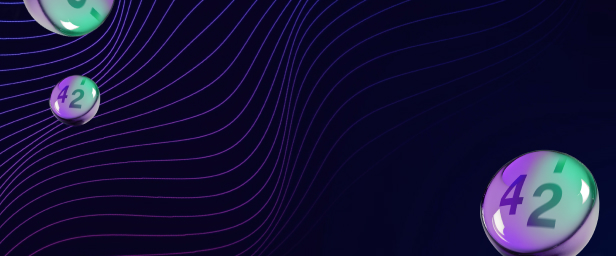Quick version
Common Symptoms of Lyme Disease
Lyme disease is caused by a bacterium transmitted through tick bites. The disease can be challenging to diagnose as symptoms vary depending on the stage of the disease. It is crucial to be aware of signs of infection, as untreated Lyme disease can lead to severe and long-lasting complications. Below is an overview of the most common symptoms for each phase of the disease:
Symptoms in Early Stage (Localized Infection)
The first stage of Lyme disease is often referred to as the localized phase, which occurs days to weeks after a tick bite. Common symptoms include:
- Erythema migrans:
A characteristic skin rash, usually shaped as a red circular mark around the tick bite, is one of the first signs of Lyme disease. It typically appears within 3-30 days after the tick bite. The rash is usually red and can expand to over 5 cm in size. Sometimes, it develops a ring-like appearance with a lighter center and darker edges. The rash may be painless or cause a mild burning sensation.
- Flu-like Symptoms:
In addition to the rash, early Lyme disease can cause flu-like symptoms such as fever, headache, stiff neck, fatigue, muscle aches, and joint pain. These general symptoms can be mistaken for a viral infection, making early diagnosis difficult.
Symptoms in Later Stage (Disseminated Infection)
If Lyme disease is left untreated, the bacteria can spread to other parts of the body within weeks to months, leading to more severe symptoms. This phase is known as disseminated Lyme disease and can affect multiple organ systems:
- Arthritis:
One of the most common conditions in the later stage is Lyme arthritis, an inflammation of one or more joints, typically the knees. This results in swelling, pain, and stiffness, which can be intermittent but may become chronic if left untreated.
- Neurological Problems (Neuroborreliosis):
Lyme disease can affect the nervous system, leading to various neurological issues. Common symptoms include meningitis (inflammation of the meninges), which causes headaches and neck stiffness, as well as facial paralysis, numbness, tingling, or weakness in the limbs. In rare cases, encephalitis or spinal cord inflammation may occur, requiring urgent medical care.
- Heart Problems (Lyme Carditis):
Though a rarer complication, Lyme disease can affect the heart's electrical conduction system, leading to an irregular heartbeat (arrhythmia), palpitations, or in severe cases, heart failure. These symptoms often require immediate treatment to prevent life-threatening conditions.
It is essential to understand that symptoms may develop gradually and vary in severity. Early diagnosis and treatment with antibiotics can prevent Lyme disease from progressing to a more serious condition. Without treatment, the disease can cause long-term damage to joints, the nervous system, and the heart.
Blood Tests to Identify Lyme Disease – How Antibody Testing Works
If you suspect Lyme disease, it is important to undergo a medical examination to obtain an accurate diagnosis. A common way to investigate Lyme infection is by measuring specific antibodies against the *Borrelia* bacteria in the blood, mainly IgM (for early infection) and IgG (for later or past infection). These antibody tests can help determine whether you have an active infection or a past one. However, antibody tests alone are not enough to make a diagnosis, as symptoms, medical history, and clinical assessment are crucial in determining whether an active infection or another cause is responsible for the symptoms. Repeated testing may sometimes be needed to monitor the disease's progression over time.
Do you suspect that you have Lyme disease, or do you want to check your antibodies after vaccination? Find out if you have IgM and/or IgG antibodies through a blood test for Lyme disease.
How Antibodies Are Formed
When the body is exposed to an infection, the immune system is activated and begins producing antibodies as a defense mechanism against the pathogens. In a Lyme infection, the immune system produces two main types of antibodies – IgM and IgG:
- IgM (Immunoglobulin M):
IgM antibodies are the first produced by the immune system during a new infection. They begin to form within days to weeks after the bacteria enter the body. A high level of IgM can indicate a recent or ongoing infection, particularly during the first few weeks after the tick bite. IgM levels tend to decrease as the infection progresses and the body transitions to producing IgG antibodies.
- IgG (Immunoglobulin G):
IgG antibodies are produced later in the infection and indicate that the body has been exposed to *Borrelia burgdorferi* for a longer time. These antibodies can remain in the blood for months or even years after the infection has cleared, meaning a positive IgG result may indicate a past infection. High IgG levels may also suggest chronic Lyme disease, where the infection has spread to other parts of the body.
How Is the Test Performed?
A venous blood sample is taken from the arm to perform an antibody test. The blood is then analyzed to measure the levels of IgG and IgM antibodies specific to *Borrelia*. The results can help the physician determine which stage of the infection you are in.
- Positive IgM Result: Indicates a recent or ongoing infection. IgM antibodies are typically elevated during the first few weeks after infection and can be used to detect early Lyme disease.
- Positive IgG Result: Indicates that the body has had contact with *Borrelia burgdorferi* in the past. This may mean the infection has been ongoing for a longer period or that you had a previous infection now under control. High levels of IgG can also suggest a chronic infection where Lyme disease has spread to joints or the nervous system.
- Combination of IgM and IgG: If both IgM and IgG are elevated, this may indicate that the infection is active and has spread over time.
Limitations of Antibody Testing
It is important to note that antibody tests do not always provide a complete picture of a Lyme infection. Since IgM and IgG can be elevated even after the infection has cleared, or in some cases do not rise at all in the early stages of infection, the results can sometimes be difficult to interpret. Therefore, test results are often combined with clinical symptoms and a thorough medical evaluation to make a definitive diagnosis.
Statistics on Lyme Disease in Sweden
According to the Swedish Public Health Agency, approximately 10,000 to 12,000 cases of Lyme disease are reported annually in Sweden, although the actual number may be higher since not all cases are detected or reported. Lyme disease is the most common tick-borne illness in the country, and the risk of infection varies depending on your location and the amount of time spent in areas where ticks are common.
Ticks thrive primarily in southern and central Sweden, where they are found in forests, meadows, and tall grass. With a milder and more humid climate due to climate change, tick prevalence has also increased in northern parts of the country, exposing more people to risk areas. During the warmer months, from April to October, ticks are most active, and the risk of Lyme disease is highest.
Lyme disease can affect people of all ages, but those who spend a lot of time outdoors, such as outdoor enthusiasts, hunters, and pet owners, are at greater risk of being bitten. On average, an estimated 10-20 percent of all ticks carry *Borrelia burgdorferi*, the bacterium that causes Lyme disease, but the proportion of infected ticks may vary depending on the region and environment.
Early diagnosis and treatment with antibiotics are essential to prevent the development of more serious complications. Therefore, it is important to be aware of the symptoms and seek medical care if you suspect you have been infected.






















